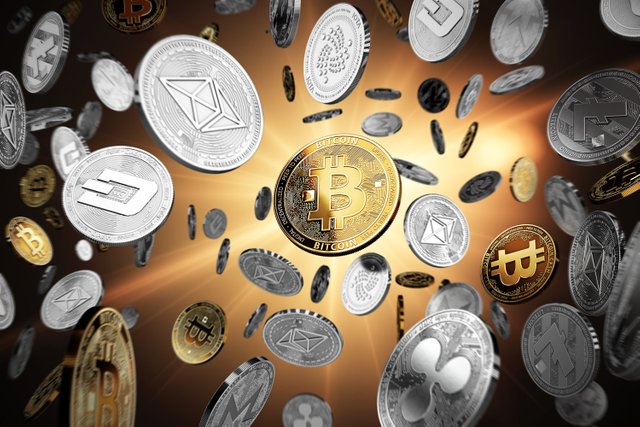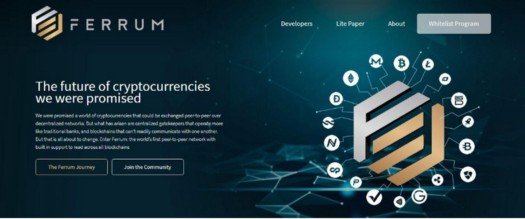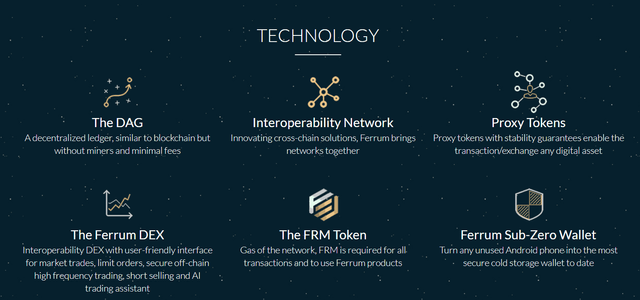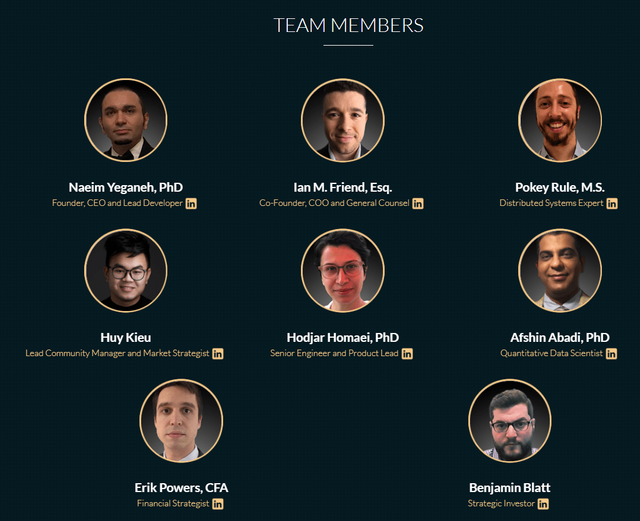Introduce

Today with the explosion of Blockchain technology has brought people many great benefits. Among them are cryptocurrencies, with a series of cryptocurrency being born: Bitcoin, Ethereum, Rippble, ... Each type has its own characteristics, each with its own advantages and disadvantages. But the common characteristic of all projects is to make human society more and more developed and fairer. However, the biggest challenge is how to combine hundreds of separate networks together? How to communicate, trade, exchange when every eco brings its own blockchain technology. How to reconcile all in one?

So far, the decentralized network is still very limited although some achievements have been achieved, but it is still not enough. For example, the ERC-20 network is limited in speed, scalability and system upgrades. Many cases of decentralized exchanges cause disappointment, it does not meet the expectations, does not satisfy the needs of customers by excessive transaction time, too poor user experience, the conclusion Poor combination of limited token offerings.
Ferrum network's mission?

So the mission of Ferrum network is how to build a decentralized network (in the spirit of Nakomoto), which enables peer-to-peer exchange with extremely high and inexpensive speeds. Ferrum networks will be upgraded compared to traditional blockchain technology in terms of processing speed, low cost, especially scalability.
• Cross-Chain Interoperability - a next generation protocol designed to connect with every blockchain
• High-Speeds and Low Costs - peer-to-peer transactions that confirm in milliseconds for around 1 cent in network fees
• Integrated Line of Financial Products - buy, exchange, transact, and store any digital asset using advanced financial applications that run on the network
• Launching with Users and Network Utility - real products, real users, proven business practices
Introducing the Ferrum network.

Ferrum network is a network capable of interacting at very high speeds, it is built for applications in the financial sector. Basically, it is made up of two closely linked components:
- The first component is DAG. DAG is an interactive network that can connect to any blockchain anywhere. It allows peer-to-peer transactions for any digital currency, especially fast transaction speeds in a millisecond.
- The second component is financial applications. With these financial applications, users can buy / sell, trade, exchange and store any digital currency. These applications are very convenient for users.
As a decentralized trading platform, Ferrum Network addresses two common problems of current DEXs (decentralized exchanges) as limited cryptocurrency support (mostly ERC-20 tokens). and scalability.
- First, Ferrum Network supports trading all types of coins and tokens including BTC, ETH, Rippble, token ERC-20, NEP-5. One of Ferrum Network's breakthroughs is to help release crypto currencies supported by external networks and ideal fiat currencies.
- Second, DEX is currently built on top of the Ethereum blockchain, the scalability of the entire network is limited due to the characteristics of the blockchain class. As a platform built into the blockchain of DAG models, Ferrum Network will allow transactions to take place quickly and inexpensively.

Ferrum network product lines include:
- Online payment application called Kudi Exchange. Kudi exchange is a platform built and it combines with other applications to help buy / sell, exchange digital currencies that are happening at a very low cost. This application is really revolutionary because users can freely send / receive cryptocurrency without going through any intermediaries. This helps users save time, effort, money, reduce paperwork when trading.
- The second product line that I want to mention is the UniFyre Wallet non-custodial cryptocurrency wallet. With this cryptocurrency wallet, you can trade any kind of digital asset, especially because of the superiority when using UniFyre wallet because it is extremely safe.
- Cold storage application: with the application called Sub-Zero wallet, users can turn their old phone (Android phone) into an extremely safe cold storage for foreign storage. Online digital assets. Sub-Zero solves two major problems: accessibility and cost. Sub-Zero will run on Ferrum network (integrated decentralized exchange technology) you can send / receive cryptocurrency to other wallets or exchanges.
Introducing Token Fe

Ferrum Network has its own token, PUR (short for PURE FERRUM) and other proxy tokens. The main feature of Fe is that it is used as a "gas" in the network, similar to the Ethereum gas charge in the Blockchain Ethereum, this should not be too strange for you. Token proxies are tokens that are sent to the network and have the same value as the original token. I will give you an example to understand. If 1 BTC is added to Ferrum Network, it will be converted into 1Fe (BTC) (obviously the conversion rate here is 1: 1) has the same value and uses the external trading protocol. Similar cases also apply to fiat currencies. If EUR or USD is sent to the network, it means that we will have Fe (USD) and Fe (EUR) in Ferrum network.
In short, Fe tokens, such as Fe (BTC), Fe (ETH) are created by blocking the initial value, they have developed a number of techniques to do this. Some tokens are related to smart contracts and some are not. However, all of them are safe for transactions.
Transaction in Ferrum network

There are two separate types of transactions in Ferrum's network:
- Users can be able to trade various types of assets (portfolio of assets) only in the same transaction. This is called internal transaction. This type of transaction can be seen by all nodes in the network. Transactions are made much simpler than cross-chain transactions.
- The second type is edge trading, which must be proved by another transaction from the external network and can only be verified by the appropriate plugin settings button. Moreover, there are two components in edge trading as external requirements - used to prove the validity of addresses in the external network and future exchanges used to trade Fe with side value. beyond its equivalent.
You can read more about transactions in the Ferrrum network at:
• Project website: https://ferrum.network/
• Project whitepaper: https://ferrum.network/wp-content/uploads/2019/06/Ferrum-Network-Whitepaper.pdf
Token Sale
• Ticker: FRM
• Token type: ERC20 as TGE
• Total hard cap: $1,120,000
• Total supply: 331,718,750 FRM
• Initial circulating supply: 11.69% of total supply
• Public sale token price: 1 FRM = $0.016
• Public sale allocation: 6% of total supply
• Private sale token price: Round 1: 1 FRM = $0.0139. Round 2: 1 FRM = $0.016
• Private sale allocation: 15% of total supply
• Private sale vesting period: 40% at TGE; 40% after 30 days from TGE; 20% after 60 days from TGE
• Seed sale token price: 1 FRM = $0.0114
• Seed sale allocation: 3% of total supply
• Seed sale vesting period: 40% unlocked after 30 days from TGE; 40% after 60 days from TGE; 20% after 90 days from TGE
Allocation of Utility Token Offering Capital

Team

Above I have explained what Ferrum Network is, why it was born, what it was born for and the benefits of using Ferrum network applications. In the time to come, the goal of Ferrum network is to constantly develop to offer the latest products such as cold wallet storage on mobile phones, improve the speed of cryptocurrency transactions, ...
For more information about Ferrum's network, please visit:
Website: https://www.ferrumnet.org/
Telegram: https://t.me/ferrum_network
Announcement channel: https://t.me/ferrum_network_announcements
Light Paper: https://github.com/ferrumnet/litepaper
Yellow Paper: https://github.com/ferrumnet/yellowpaper
Bitcointalk username: yenyen143
Bitcointalk profile link: https://bitcointalk.org/index.php?action=profile;u=2370719